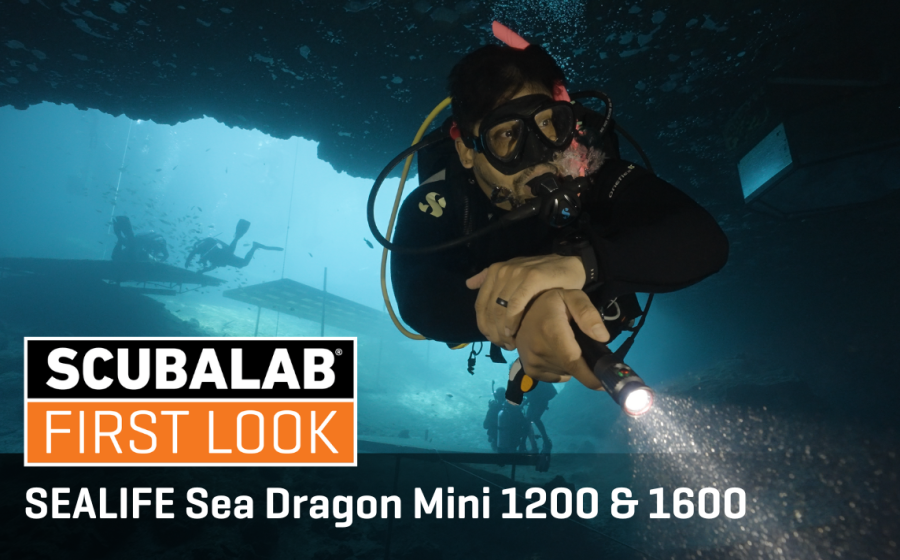Better Alternatives

|
| Alternate inflation regs eliminate the traditional octopus hose and put your backup within easy reach.|
January 2004
Photography by Mitch Mandel
Regulators Reviewed in This Article
| Aeris Air Link Aqua Lung Air Source II Aquatec Air 3 Atomic Aquatics SS1 | Genesis Gemini GS 070 Oceanic Air XS 2 Tusa Duo-Air Zeagle Octo+MKII |
When it comes to alternate air sources, it's hard to beat the streamlined functionality of an alternate inflation regulator. These fully functional regulators connect to, or are integrated into, your BC's power inflator, eliminating the traditional octopus hose and putting your backup reg close to your mouth and within easy reach.
It's not easy to build an inflator/reg because you have to cram a lot into a small housing--an ergonomically correct mechanism for inflating and deflating the BC, coupled with a reliable regulator that delivers a low work of breathing. But today's inflator/regs are relatively inexpensive, easy to install (although most manufacturers recommend your dive store do the installing), and most provide surprisingly easy breathing, as good as or even better than traditional octopus regs. They are designed to be connected to any first stage as long as the first stage's intermediate pressure falls within the inflator/reg's operational parameters (more on that later), which virtually all first stages do.
Bottom line: Inflator/regs are proven technology. Most models on the market perform well, but as we discovered in our test of eight of recreational diving's most popular inflator/regs, the newest designs have raised the bar in breathing performance and ergonomic design.
PUTTING THEM THROUGH THEIR PACES
Our first stop was the Dive Lab, an independent test facility in Panama City Beach, Fla., where we do all of our breathing machine testing. Here the units were hooked up to an ANSTI breathing simulator and tested at two depths: 132 feet salt water (fsw), recognized as the maximum recommended depth limit for recreational scuba diving, and 165 fsw, the test depth used in the European testing standard EN-250. At those two depths, the inflator/regs were subjected to two breathing rates or respiratory minute volumes (RMVs): 37.5 RMV, considered a moderately aggressive breathing rate, and 62.5 RMV, a heavy-work breathing rate, both of which can be used to simulate a nervous, stressed or panicked diver.
To make sure we were focusing on the performance of the inflator/regs rather than on another component in the system, we used the same regulator first stage for all tests. Its intermediate pressure was set at 136 psi, which not only falls right in the middle of most manufacturers' recommendations, but also represents the mid-range pressure setting of most first stage regulators. The supply pressure to the first stage was maintained at 725 to 765 psi, which is the standard pressure range used for European testing and past Scuba Lab tests.
The breathing machine measures work of breathing, or how much effort a diver has to put into inhaling and exhaling, expressed in joules per liter (j/l). The lower the number, the easier the breathing. European standards set the maximum breathing effort at 3 j/l, which is also what we use in our tests. We started each inflator/reg at the surface breathing at 62.5 RMV, then slowly took it to 132 feet. If the unit could handle that depth within the 3 j/l standard, we took it down to 165 feet. If the regulator couldn't make it to 132 feet, the maximum depth achieved was recorded and the cycle was completed at the lower breathing rate of 37.5 RMV.
When a regulator exceeds 3 j/l, it "fails" our test for the given RMV/depth. That doesn't mean that it stops working, just that the effort it required exceeds what has become acceptable for modern recreational gear.
Once the simulator tests were done, our test divers took them on repeated ocean dives. Each unit was scored on four crucial ergonomic points: ease of breathing in various positions, whether it breathed wet or dry, how easy it was to purge the inflator/reg, and how easy the controls--inflator button, deflator button and regulator purge--were to find and use, both when using the unit as a BC inflator, and when using it as a regulator.
THE OVERALL RESULTS
When all test scores were tallied, we found:
> At 132 feet, most of the inflator/regs we tested deliver good to excellent breathing performance, with at least some degree of reserve capacity. In an emergency situation within recreational dive depths, these models will provide a smooth, steady flow of air relatively effortlessly.
> The two newest models tested deliver breathing performance so smooth and with so much reserve capacity that even at the heavy-work RMV at 165 feet, they have performance to spare.
> Only one model's performance fell noticeably short of the others.
> In the ergonomic tests, divers found that all the units listed here were easy to access and use. All breathed dry, and our testers' scores for user controls ranged from good to excellent.
THE TESTERS' CHOICES:
Atomic Aquatics SS1
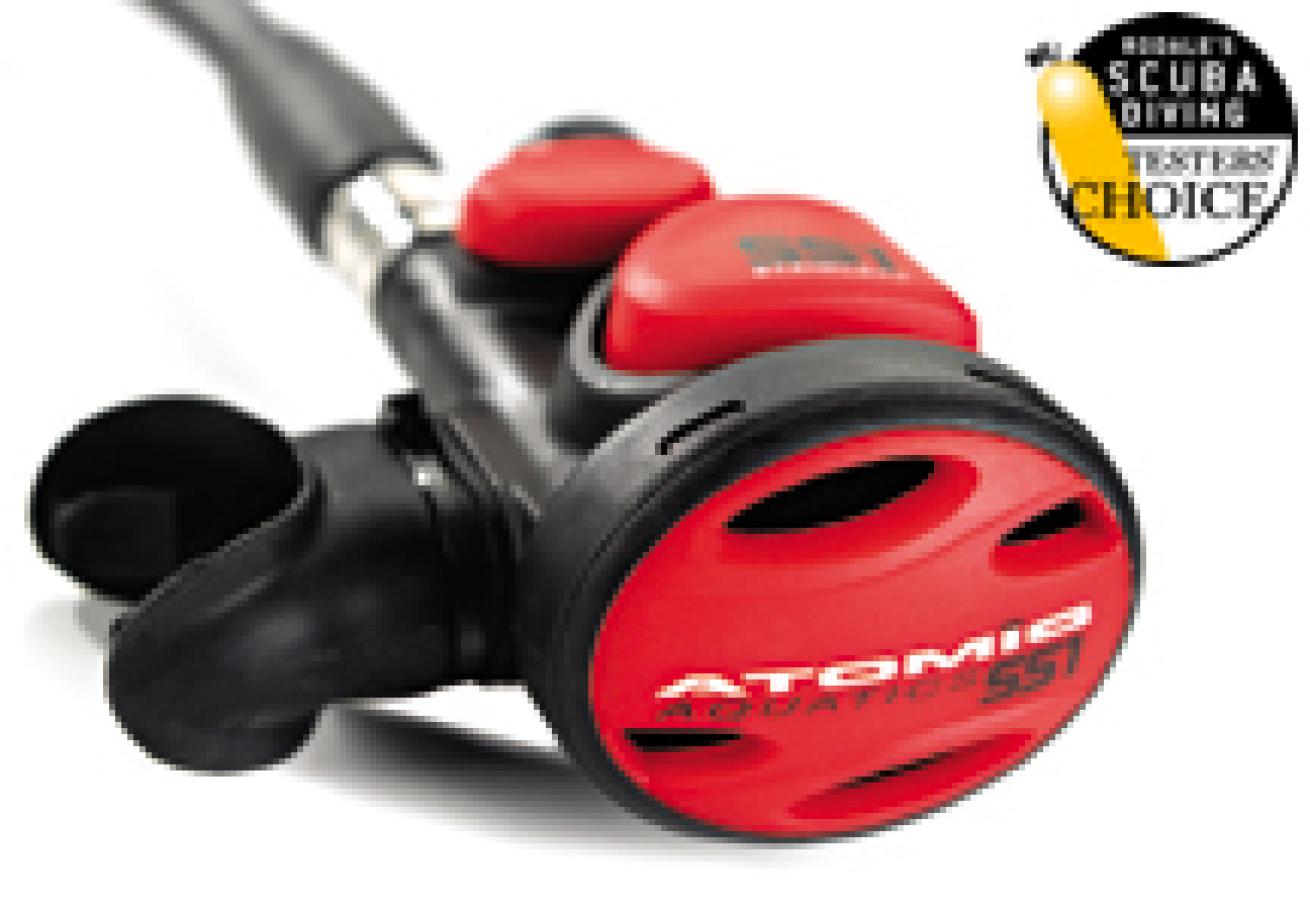
| | Atomic Aquatics SS1| This new inflator/reg offers performance to spare in a user-friendly package. The SS1 breathes better than many primary-use regulators and generated the best overall simulator performance among the integrated inflator/regs (only the Gemini, which does not incorporate an inflator into its design, could beat it), then hit the water and earned the highest ergonomic scores of all the units we tested.
A low profile enables the SS1 to lie relatively flat against the BC. Large, contoured inflate/deflate buttons are positioned on the top of the housing and, according to our test divers, they're comfortable and easy to operate with one hand, even when the SS1 is in your mouth. An efficient purge is located on the end of the unit.
A unique feature of the SS1 is a threaded coupling that enables you to unscrew the inflator/reg from the end of the corrugated hose so you can transport and store it along with your primary regulator and gauges, or easily switch it between your tropical BC and your temperate-water BC. The SS1 also includes a set of adapters and hardware to fit virtually any BC's corrugated hose and remote dump valve assembly. This unit is available in stainless-steel and all-titanium versions. The titanium version is lighter and provides added corrosion resistance.

Genesis Gemini GS 070
| Genesis Gemini GS 070|
Genesis's new Gemini is essentially an octopus regulator built into an inflator hose that works with your BC's existing power inflator. Simply substitute your BC's low-pressure supply hose with the Gemini's hose and attach the quick-connect fitting to the power inflator. That's all there is to it.
On the simulator, the Gemini delivered the lowest work of breathing--in all RMV/depth categories--of all the units in this test. In fact, it breathes better than many primary regs. In the water, test divers report it's a dry, smooth breather.
There's a sensitivity lever on the side of the housing, similar to a dive/pre-dive switch so you can de-tune it to prevent free-flows. The Gemini can be used with virtually any power inflator and at $130 it's also a Best Buy.
THE VERY GOOD PERFORMERS
While the newest inflator/regs took Testers' Choice honors, five earlier models currently on the market remain top performers. Within recreational diving depths (and even to 165 feet), they all deliver excellent breathing scores at a moderate breathing rate. While none of these models was able to attain the extreme RMV/depth performance level--a test designed to highlight reserve capacity--they provide solid performance at recreational depths, and have a track record for reliability. Test divers rated their in-water performance as very good in virtually all ergonomic categories.
Oceanic Air XS 2| With excellent scores for moderate breathing loads at 132 and 165 feet, and very good breathing machine performance under heavy breathing loads at 132 feet, the Air XS 2 leads this pack of earlier models when it comes to breathing performance. Our test divers found it to be a smooth, dry breather in all positions, and liked the compact, low profile. They gave it very good scores across the board in all ergonomic testing categories, except for the position of the inflate and deflate buttons, where it earned a good rating. Our divers found the position of the buttons makes one-handed operation a bit awkward. The Air XS 2 can be attached to most existing BC corrugated hoses or can be purchased as a complete unit.
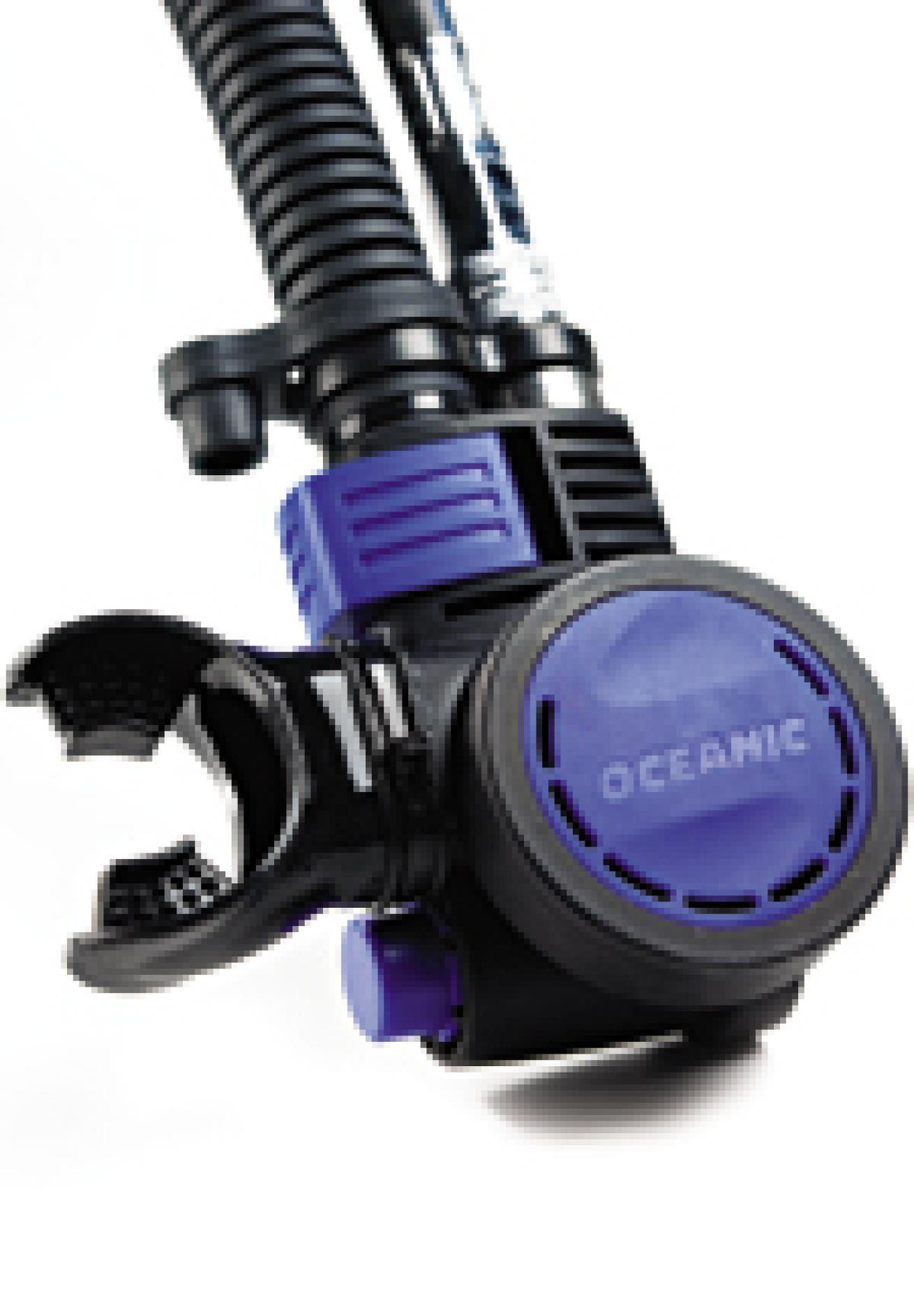
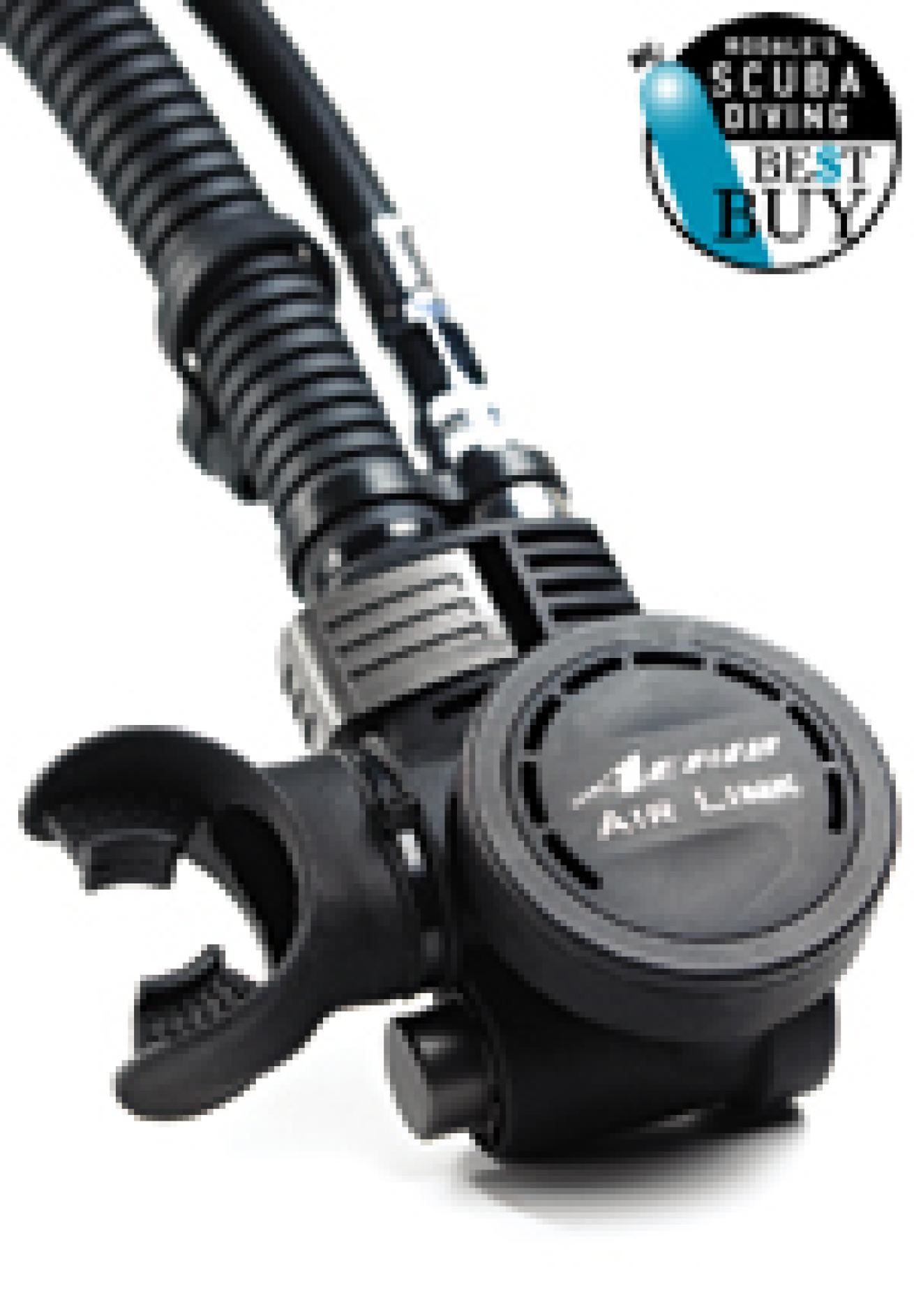

Tusa Duo-Air | | Tusa Duo-Air| Delivering excellent performance on the simulator and very good performance in the water, the Duo-Air is as easy to use as it is to breathe from. Tusa puts the Duo-Air's control buttons on top of the housing like the Atomic SS1, although they are smaller and not as conveniently shaped. But the positioning is good, allowing for easy one-handed buoyancy control whether you've got the Duo-Air hanging from your shoulder or clenched between your teeth. The purge is located on the end of the housing and incorporates a small button that can be awkward to depress when wearing gloves.
THE VERY GOOD PERFORMERS (cont.)

Zeagle Octo+MKII | Zeagle Octo+MKII| With simulator and ocean performance nearly identical to the Duo-Air, Zeagle's Octo+ is a smooth, dry-breathing alternate inflation reg. What is different between the two inflator/regs is button placement; the Octo+ has its inflation and deflation controls on the underside of the housing. At first this positioning seems awkward; however, once you get used to it, it's actually quite efficient. The buttons are close together so, with a little practice, you can operate both buttons with just your thumb while gripping the inflator. An efficient purge sits out at the end of the housing.
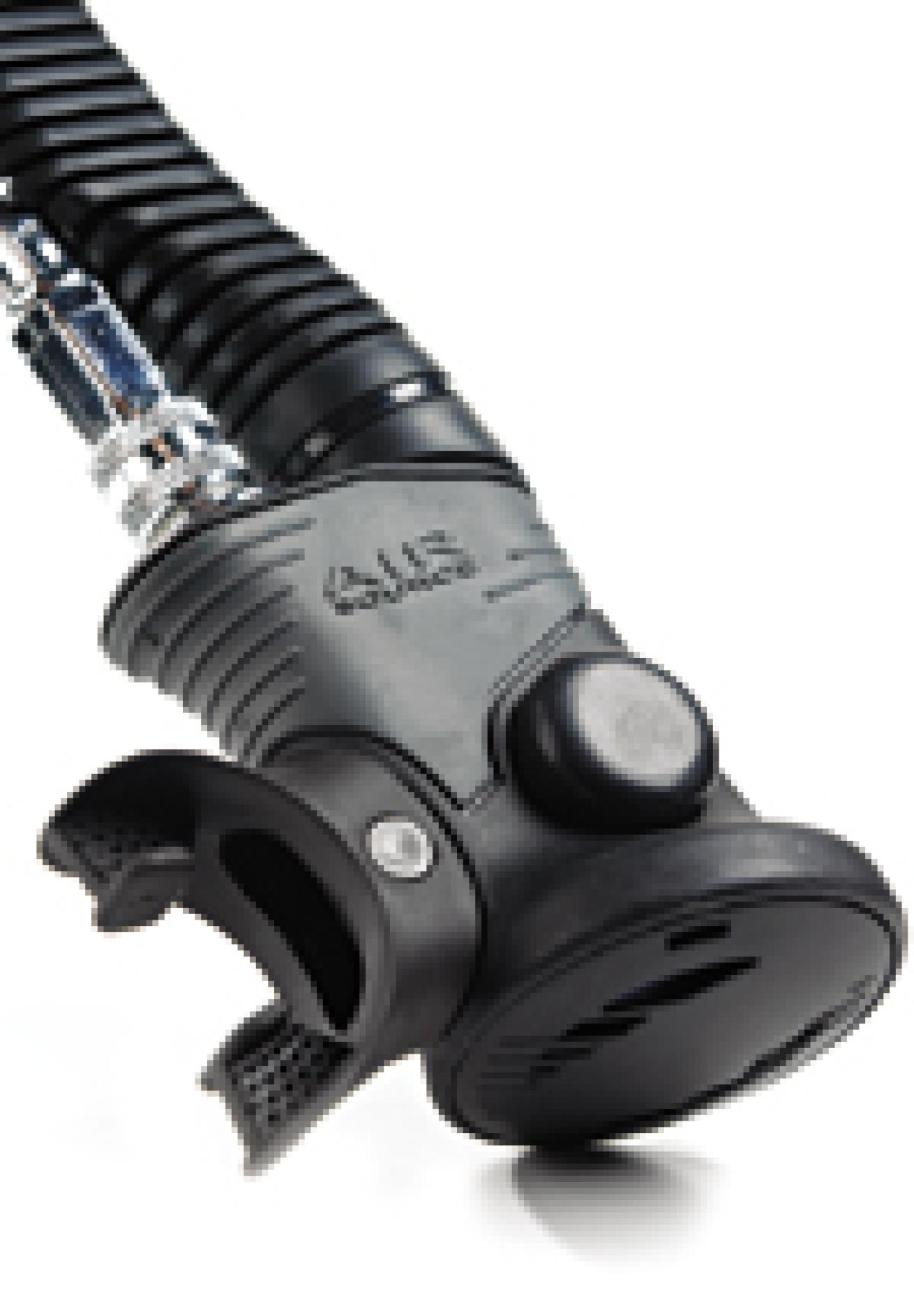
Aqua Lung Air Source II | Aqua Lung Air Source II| This second-generation inflator/reg is designed with the deflator button on top and the inflator button underneath. This button placement makes it easy to regulate buoyancy one-handed with the Air Source II hanging from your shoulder; however, when it's in your mouth it is not quite as convenient. A powerful regulator purge is located on the end of the housing.
The Air Source II delivered excellent simulator performance at both test depths using the moderately aggressive breathing test rate, but couldn't quite reach 132 feet at the heavy-work RMV. It was, however, able to reach 109 feet before exceeding test parameters.
In the water, test divers found it to be a very smooth breather and dry in all positions. It's available as just an inflator/reg or as a complete unit with a dump valve and corrugated hose.
LIMITED PERFORMANCE:

| Aquatec Air 3
| Aquatec Air 3|
The only inflator/reg on the market with a built-in horn, the Air 3 will produce about 120 decibels of teeth-chattering noise above water, and a duck-like honk below. However, the breathing characteristics of the Air 3 are nothing to brag about. On the simulator it wasn't able to reach any of the RMV/depth test levels. It exceeded our test parameters at 109 feet at the moderately aggressive breathing rate. Consequently, we don't recommend the Air 3 for diving deeper than 100 feet.
In the water, test divers (who didn't know the results of the breathing machine tests) said the Air 3 breathed noticeably harder--even at shallow depths--than all the other units, but gave it a fair rating for ease of breathing on dives to about 65 feet. They also reported that it breathes dry and the buttons were easy to use.
DEFINING OUR TERMS
When you see the words excellent, very good, good, fair and poor in bold, they represent a numeric score on a five-point scale that encapsulates the results of our tests. (5-Excellent; 4-Very Good; 3-Good; 2-Fair; 1-Poor)
FOR MORE INFORMATION:
AERIS
www.diveaeris.com
AQUA LUNG
www.aqualung.com
AQUATEC
www.aquatecusa.com
ATOMIC AQUATICS
www.atomicaquatics.com
GENESIS SCUBA
www.genesisscuba.com
OCEANIC
www.oceanicww.com
TUSA
www.tusa.com
ZEAGLE
www.zeagle.com {mospagebreak}
| DATA CHART | |
|---|---|
| MANUFACTURER Product Name | PRICE| PRICE (w/valve & corrugated hose assembly)| WARRANTY| MADE IN| OPTIMUM INT. PRESSURE (in PSI)| FACTORY-READY NITROX-CAPABLE |
 AERIS Air Link AERIS Air Link |
$159.95| $209.95| 2-Year Limited| USA| 138-145| Up to 40% |
| AQUA LUNG Air Source II | $205| $250| Limited Lifetime| Mexico| 140| Up to 40% |
| AQUATEC Air 3 | $199.99| N/A| 1-Year Limited| Taiwan| 145| N/A* |
 ATOMIC AQUATICS SS1 ATOMIC AQUATICS SS1 |
$229 SS $349 Ti| N/A| Limited Lifetime| USA| 125-145| Up to 50% |
  GENESIS SCUBA Gemini GS 070 GENESIS SCUBA Gemini GS 070 |
$130| N/A| 2 Years| USA| 125-140| Up to 40% |
| OCEANIC Air XS2 | $189| $219| 2-Year Limited| USA| 130-150| Up to 40% |
| TUSA Duo-Air | $220| N/A| Limited Lifetime| Italy| 135-145| Up to 40% |
| ZEAGLE Octo+ MKII | $204| N/A| Lifetime| USA| 135| Up to 40% |
| * As delivered from the factory, not recommended for nitrox. However, an upgrade kit for authorized dealers to install is available to make the Air 3 nitrox-compatible up to 40%. |
| ERGONOMIC PERFORMANCE | SIMULATOR PERFORMANCE | |
|---|---|---|
| MANUFACTURER Product Name | EASE OF BREATHING | WETNESS| CLEARING BLOW/PURGE| USER CONTROLS| A| B| C| D| TOTAL |
 AERIS Air Link
AERIS Air Link
|
4 | 4| 4| 3| 5| 5| 4| | 14| NOTE: Blank spaces indicate that the regulator was not able to achieve the RMV/Depth category with-out exceeding test limits. |
| AQUA LUNG Air Source II | 4 | 4| 4| 4| 5| 5| | | 10 |
| AQUATEC Air 3 | 2 | 4| 3| 4| | | | | |
 ATOMIC AQUATICS SS1 ATOMIC AQUATICS SS1 |
5 | 4| 4| 5| 5| 5| 5| 4| 19 |
  GENESIS SCUBA Gemini GS 070 GENESIS SCUBA Gemini GS 070 |
4 | 4| 4| 4| 5| 5| 5| 5| 20 |
| OCEANIC Air XS2 | 4 | 4| 4| 3| 5| 5| 4| | 14 |
| TUSA Duo-Air | 4 | 4| 4| 4| 5| 5| 3| | 13 |
| ZEAGLE Octo+ MKII | 4 | 4| 4| 4| 5| 5| 3| | 13 |
| RATING SYSTEM FOR PERFORMANCE: 5=EXCELLENT 4=VERY GOOD 3=GOOD 2=FAIR 1=POOR | ||
| ERGONOMIC CHART EXPLANATIONS EASE OF BREATHING. How well does the alternate air source (AAS) deliver air when the diver is propelling himself forward in the standard swimming position? WETNESS. During normal swimming and when in odd positions, does the AAS breathe wet or dry? EASE OF CLEARING. How difficult is it to find and use the purge? How dry is it after being cleared? How forceful is the purge? How much force is required to clear the regulator by exhaling? USER CONTROLS. How easy is it to find and use the inflate/deflate buttons? Are the controls efficient? | ||
| SIMULATOR CHART DEFINITIONS COLUMN A > 37.5 RMV @ 132 fsw: The maximum recreational depth at a moderately aggressive breathing rate. COLUMN B > 37.5 RMV @ 165 fsw: The European Conformance (CE) standard test depth at a moderately aggressive breathing rate. COLUMN C > 62.5 RMV @ 132 fsw: The maximum recreational depth at a heavy-work breathing rate. COLUMN D > 62.5 RMV @ 165 fsw: The CE standard test depth at a heavy-work breathing rate, which happens to be the CE standard test breathing rate. This is also the depth and breathing rate commonly used by manufacturers when determining a regulator's performance. | ||
| SIMULATOR CHART SCORING Breathing simulators are great indicators of a regulator's--or in this case, an inflator/reg's--abilities, as expressed in EXT WOB (External Work of Breathing, the sum of the inhalation and exhalation effort expressed in joules per liter, or j/l). However, with a machine as accurate as the ANSTI simulator, competing models produce a litany of j/l scores differing from one another by a matter of tenths and even hundredths of a point, which can be detected by the simulator but seldom, if ever, by a diver. So for the sake of simplicity, and to avoid losing perspective in the original goal (which is to isolate good-breathing AASs) by becoming obsessed with decimal points, we've translated j/l scores into three basic classifications: Excellent, Very Good and Good. Note: Alternate air sources are designed as secondary, not primary, air delivery systems. Consequently, the standard regulator test scoring system has been adjusted down to reflect this. Here's what each score represents: 5 = EXCELLENT > Any AAS that can achieve the breathing rate/depth category with an EXT WOB of 1.75 j/l or less. 4 = VERY GOOD > Any AAS that can achieve the breathing rate/depth category with an EXT WOB of 2.5 j/l or less. 3 = GOOD > Any regulator that can achieve the breathing rate/depth category with an EXT WOB of less than 3.0 j/l (the EN250 limit). KEEP IN MIND: Pay particular attention to Columns A, B and C because these represent depths and breathing rates recreational divers are more likely to experience. Column D is useful primarily in determining an inflator/reg's reserve capacity. | ||
| WARNING: Although we're using excessive depths to show both how these alternate air sources perform and their reserve potential, this is not to suggest that you should take them that deep. Scuba Lab doesn't recommend diving deeper than the recreational depth limits without proper training. |





